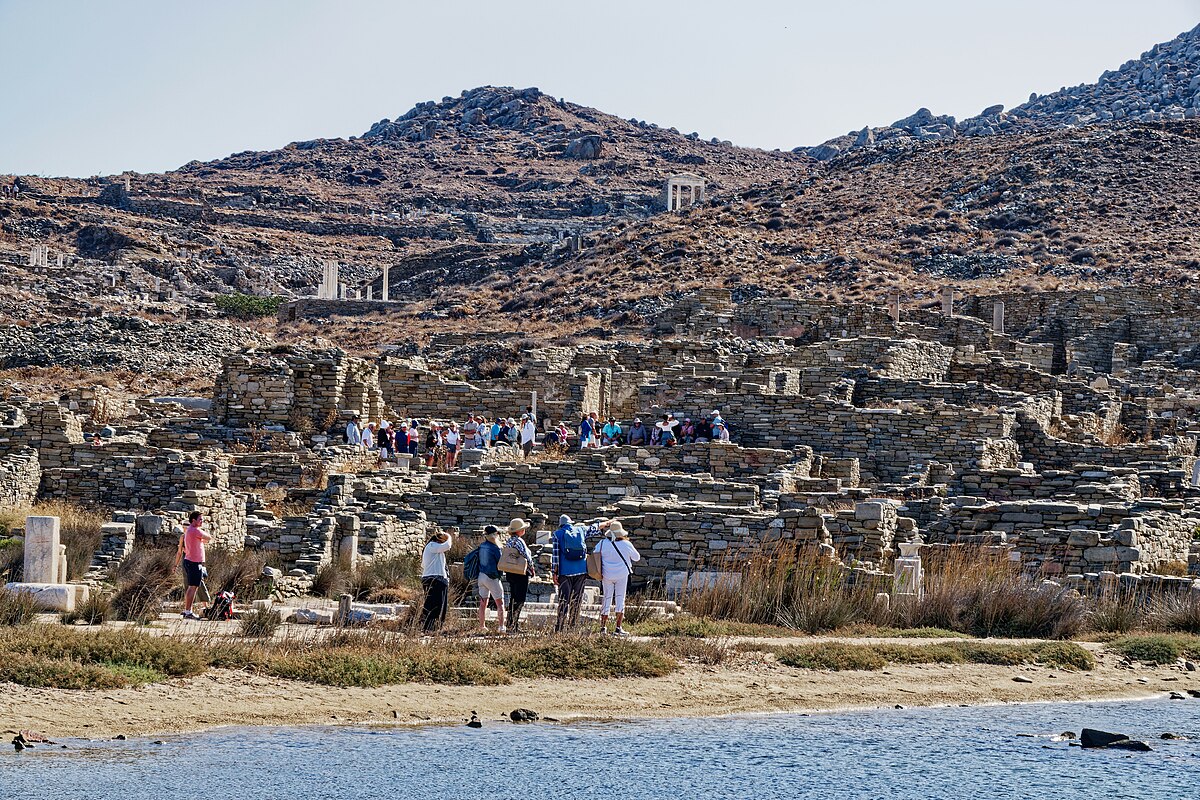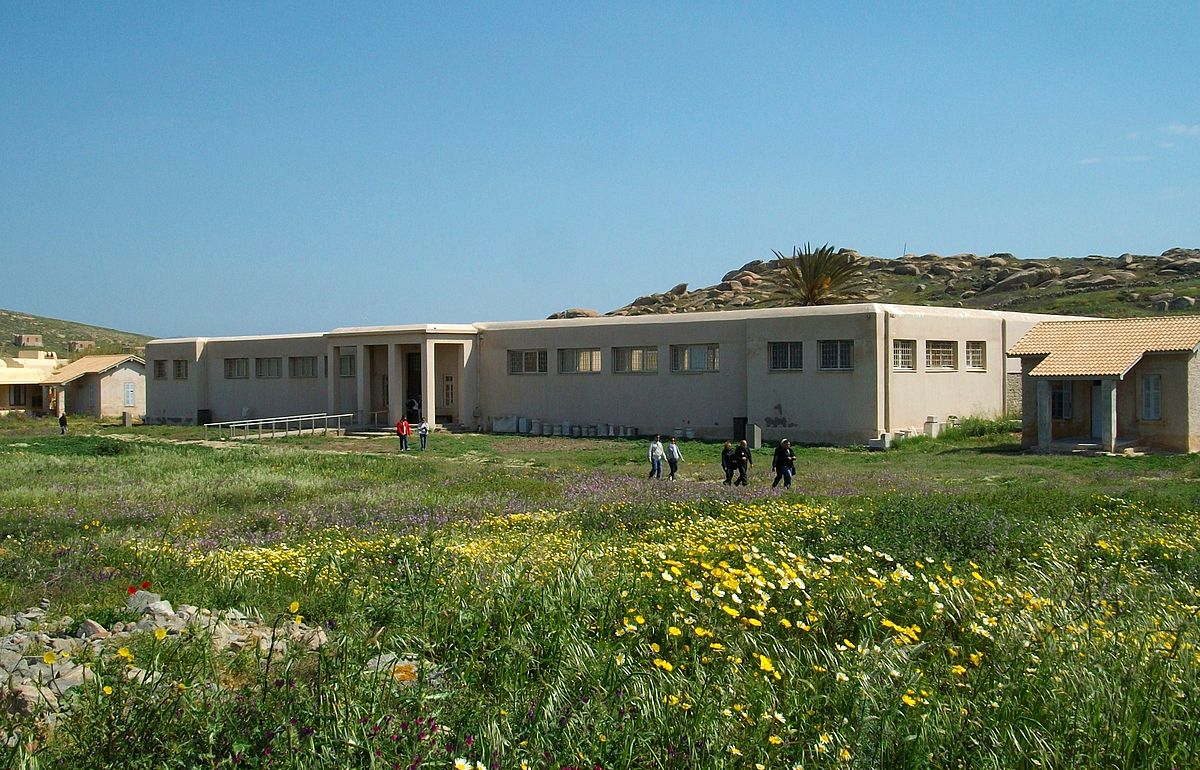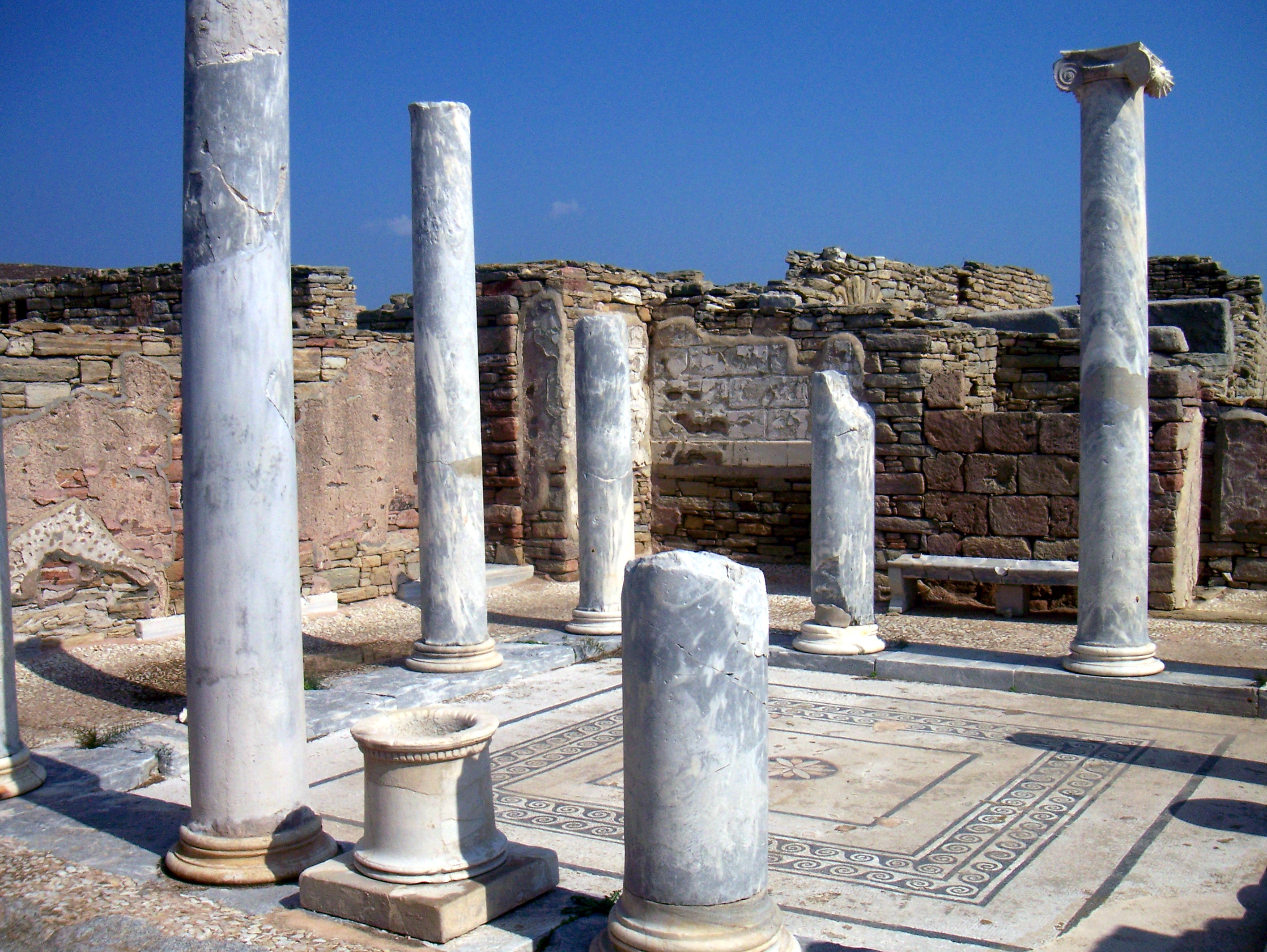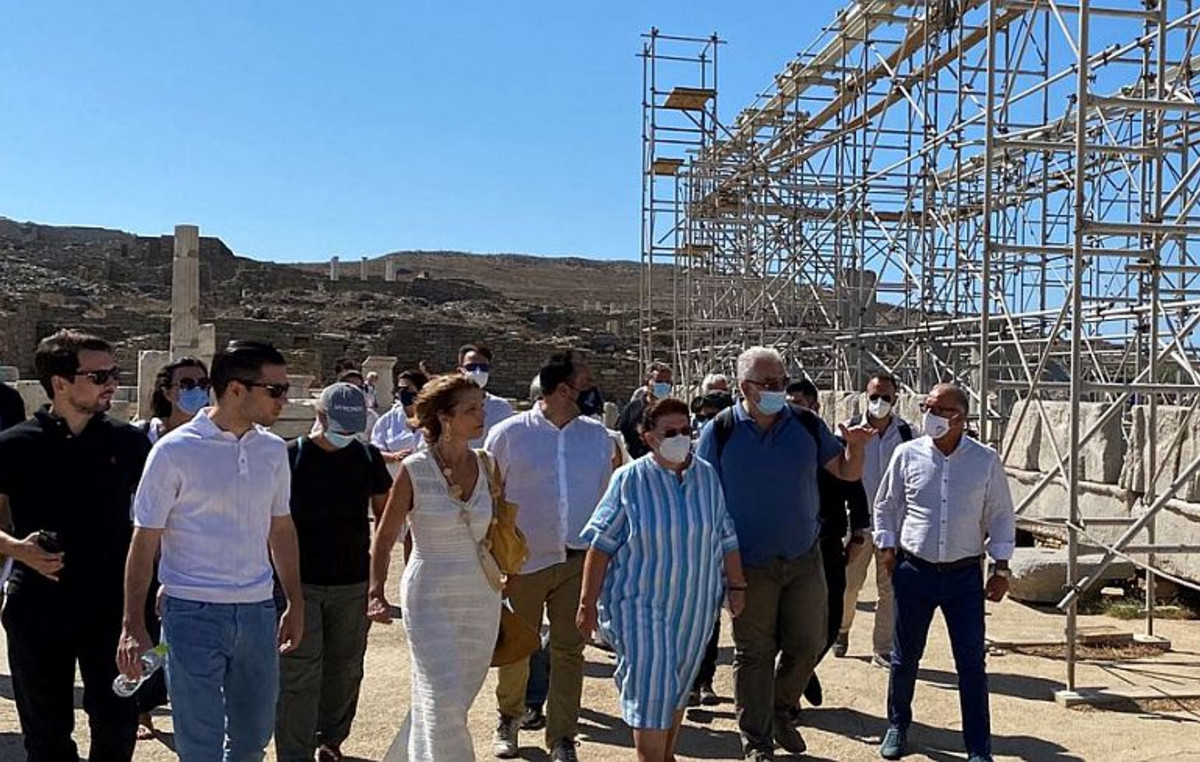Godzilla
ゴジラ
Delos (altgriechisch Δῆλος, neugriechisch Δήλος Dilos [ˈðilɔs] (f. sg.), auch Mikra Dili ‚Klein-Delos‘) ist eine Insel der Kykladen im Ägäischen Meer, gelegen zwischen Mykonos im Nordosten und Rinia (dem antiken Rheneia) im Westen. Sie ist ein schmaler, etwa 4,6 Kilometer langer und maximal 1,2 Kilometer breiter Granitrücken mit dem Berg Kynthos in der Mitte (112 m). Die Fläche beträgt 3,536 km².[1] Heute leben auf Delos nur die Museumsaufseher mit ihren Familien.
Delos war in der Antike eine blühende und durch das dortige Apollonheiligtum für die Griechen heilige Stätte.
Die Insel wurde 1990 von der UNESCO zum Weltkulturerbe erklärt.

 de.wikipedia.org
de.wikipedia.org
Einst, wie der Mythos erzählt, war Delos eine schwimmende Insel auf dem Meer. Nur hier konnte die von Hera verfolgte und an der Niederkunft auf jederlei festem Boden gehinderte Leto niederkommen. Danach befestigte Poseidon (einer anderen Version nach Zeus) die Insel an vier diamantenen Säulen.
Leto gebar hier die Artemis und den Apollon (daher deren Beinamen Delia und Delios).
Die Insel war deshalb ein geheiligter Ort und wurde ein Hauptsitz der Verehrung beider Gottheiten, nachdem schon vorher ein vorgriechisches Götterpaar dort verehrt worden war.
Auf ihr soll zur Zeit der Irrfahrten von Aeneas der König Anios gelebt haben, der Aeneas zum Orakel führte. Dort verkündete Apollon Aeneas, dass er zur „alten Mutter“ fahren soll. Dies war Italien, doch Aeneas und sein Vater Anchises deuteten es falsch und sie fuhren nach Kreta.
Delos war in der Antike eine blühende und durch das dortige Apollonheiligtum für die Griechen heilige Stätte.
Die Insel wurde 1990 von der UNESCO zum Weltkulturerbe erklärt.

Delos – Wikipedia
Einst, wie der Mythos erzählt, war Delos eine schwimmende Insel auf dem Meer. Nur hier konnte die von Hera verfolgte und an der Niederkunft auf jederlei festem Boden gehinderte Leto niederkommen. Danach befestigte Poseidon (einer anderen Version nach Zeus) die Insel an vier diamantenen Säulen.
Leto gebar hier die Artemis und den Apollon (daher deren Beinamen Delia und Delios).
– Theognis von Megara: Die Geburt des Apollon.„Als dich, Herrscher Apoll, dort unter dem wipfelnden Palmbaum,
Den sie mit Armen umschlang, Leto, die Hehre, gebar,
Dort am Auge des Sees, dich aller Unsterblichen Schönsten,
ward von ambrosischem Duft Delos geheiligtes Rund
Bis an die Ufer erfüllt, und es lachten umher die Gefilde
Und es erglänzte vor Lust blauer die Tiefe des Meers.“
Die Insel war deshalb ein geheiligter Ort und wurde ein Hauptsitz der Verehrung beider Gottheiten, nachdem schon vorher ein vorgriechisches Götterpaar dort verehrt worden war.
Auf ihr soll zur Zeit der Irrfahrten von Aeneas der König Anios gelebt haben, der Aeneas zum Orakel führte. Dort verkündete Apollon Aeneas, dass er zur „alten Mutter“ fahren soll. Dies war Italien, doch Aeneas und sein Vater Anchises deuteten es falsch und sie fuhren nach Kreta.









